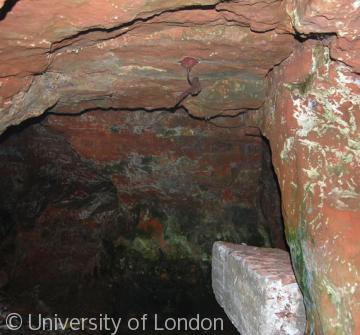Redcliffe Caves

Some people mistakenly believe that the network of caves under Redcliffe Hill was used to store slaves before sale in Bristol. Perhaps this rumour came about after some French Prisoners of War were kept in the caves briefly during the French Revolutionary and Napoleonic Wars. The caves were usually used to keep the stores for ships. Today the City Council sometimes opens the caves for guided tours, but be careful - it is easy to get lost in the dark passages! Against the wall on your right above one of the entrances to the caves is a plaque referring to the "Middle passage". The plaque above the entrance suggests that slaves were incarcerated in the barred section within the caves. This story may have originated because goods relating to the African and West Indian trades were stored there. The only other evidence linking the caves with the slave trade is an 18th century account of French seamen, some of whom may have been black, being taken prisoner by Bristol privateers and kept in the caves. The main product of the caves was sand, needed for the production of glass for bottling beers and spirits such as rum (made from molasses from sugar cane which was produced on the slave plantations) and for other glass objects including trade goods for Africa. These areas known as Temple Gate and St Phillips were the main centres of glass production in Bristol, with owners listed such as John Cave and George Daubeny.
Content generated during research for the paperback book 'Bristol: Ethnic Monorities and the City 1000-2001' (ISBN 13 : 978-1-86077-477-5 ) for the England's Past for Everyone series










